Hello,
Welcome to today’s edition of Kitchen Projects. Thank you so much for being here.
Today, we are answering philosophical questions about cake, featuring the one, the only, the jewel of the Midwest US… the Bundt Cake! Last summer I was lucky enough to get a tour around the Nordic Ware factory - this brilliant bake and cookware producer has a history inextricably linked with bundt cake, and I’m excited to tell you more. We’ll end with a buttermilk, vanilla and honey pound-style cake which bakes beautifully in fluted tins.
Over on KP+, I’m sharing my recipe inspired by the famous ‘tunnel of fudge’ recipe that turned bundts from fetch to favoured in the 60s. It’s moussey, it’s rich and I think TOF creator Ella Rita Helfrich would be into it. I’m also doing a giveaway for a Nordic Ware bundt pan! Click here for the recipe.
What's KP+? Well, it's the level-up version of this newsletter. By joining KP+, you will support the writing and research that goes into the newsletter (including the commissioning - and fair payment - of all the writers), join a growing community, access extra content (inc., the entire archive with 300+ recipes) and more. Subscribing is easy and only costs £6 per month or just £50 per year (equivalent to £4.10 per month). Why not give it a go? Come and join the gang!
Love,
Nicola
What’s bundt got to do with it?
My first, and perhaps still strongest, memory of Bundt Cake was watching an episode of Sabrina the Teenage Witch. In the episode, ‘Bundt Friday’, Sabrina bakes a chocolate bundt cake and adorns it with magical truth sprinkles, and hijinks ensue. Though I don't remember the hijinks, I do remember the cakes. Did I expect to be writing about this seminal episode of my cake curiosity and development over two decades later? No! But today, I finally got the answer to my six-year-old-self's question: What on earth is bundt cake?!
Like many of our favourite pastries, the ‘bundt’ is a branch of an extensive family tree that can be traced back to the Kugelhopf, a panettone-adjacent bread baked in a decorative tin. Since bundt cake is ubiquitous, it might surprise you—as it did me—that the word ‘bundt’ cannot be traced back to the Austrian mediaeval times but instead to a trademark application in 1950 by David and Dotty Dalquist, the founders of Nordic Ware.
If you’re not familiar, Nordic Ware is a producer of baking and cooking equipment based—and fully produced—in Minnesota. There is certainly state pride for bundt cake (though the famous cake chain ‘Nothin’ BUNDT cakes’, which sells nothing but bundt cakes, obvs, was actually founded in Las Vegas, not the Midwest), and rightly so—it’s a charming cake with a charming backstory.
Before the Dalquists, there was no bundt, but there was ‘bund’ or ‘bundkuchen’, a German word meaning ‘bunch’ or ‘bundle’ cake, which were popular for tea time gatherings and feeding a crowd. Founded in 1946, Nordic Ware had already produced bakeware inspired by their Scandinavian heritage, but the distinctive fluted ring-shaped ‘Bundt’ pans weren’t produced until 1950. Inspired by the European Kugelhopf tins, the pans added an integral strand to the Nordic Ware product line. Strictly speaking, any mention of a bundt should really come with a Ⓡ right after it. Of course, the bundt, like ‘popsicles’, ‘sellotape’ And ‘Tupperware’ and ‘chapstick’ has become so commonplace in culture that we forget it’s a brand.
Though you might think the pans had been an immediate hit, Bundt mania didn’t hit it off until 1966. That year, Ella Rita Helfrich entered a ‘Tunnel of Fudge’ cake into the Pillsbury San Francisco Bake Off; A rich bundt cake with an ooey-gooey centre packed with walnuts. Though it only won second prize, it captured the heart of the nation and Nordic Ware had over 200,000 requests for the pan. The original recipe was a combination of boxed cake mix and canned frosting (which has since been discontinued), and many have attempted to recreate it. I gave it a shot over on KP+ today, though admittedly, mine is a much more mousse-like and modern brownie-inspired:
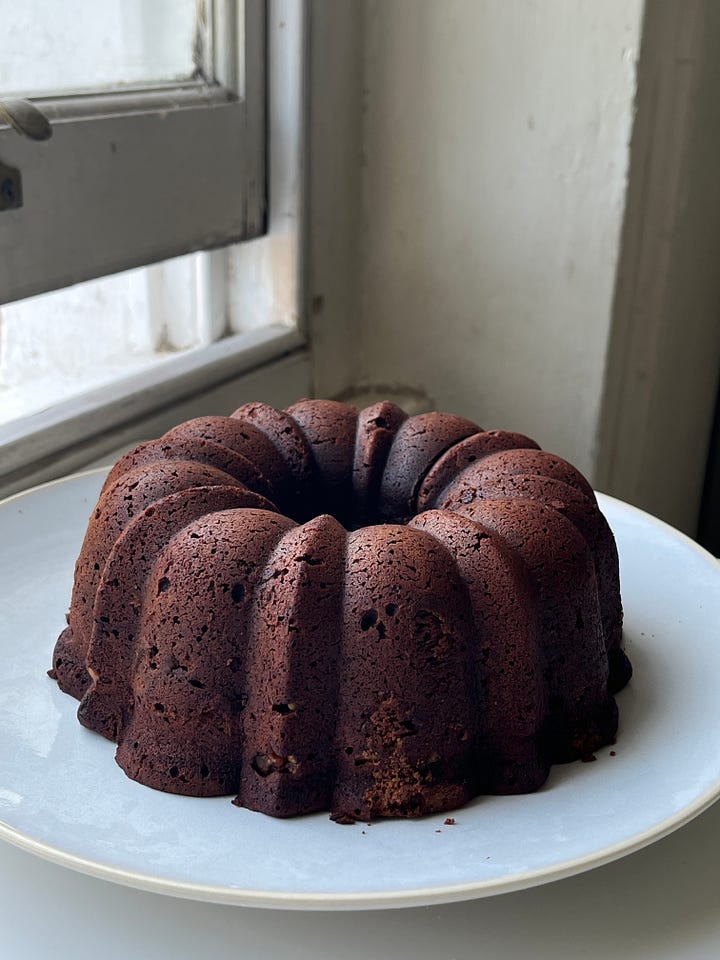
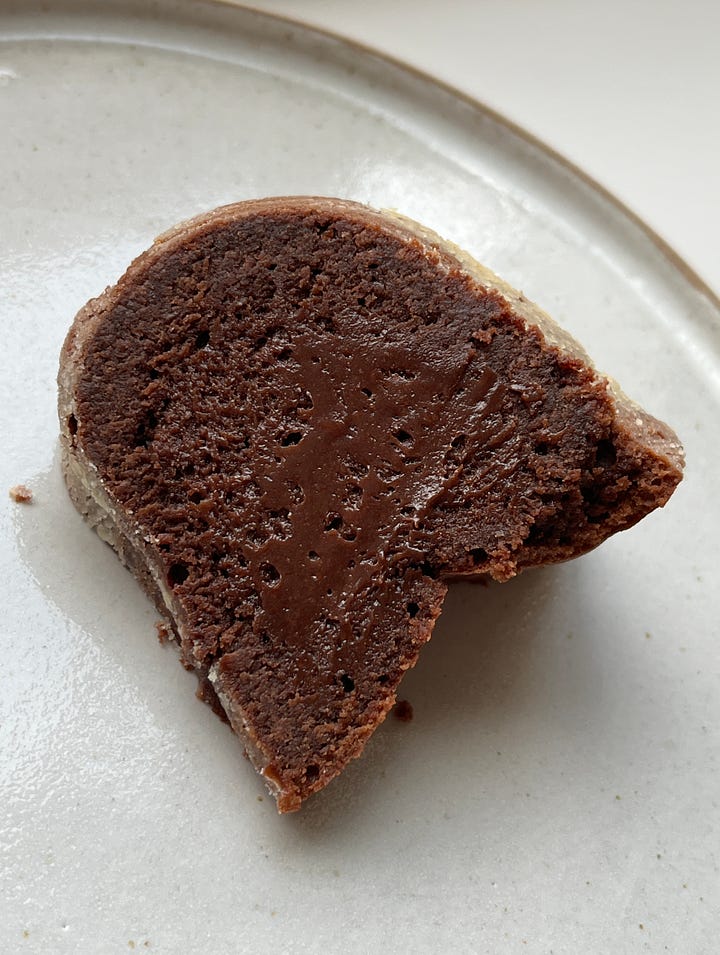
I tend not to play favourite with brands, but I have to hand it to Nordic Ware - I am a fan. You’ve probably seen their intricate fluted tins and aluminium bakeware, and if you’ve ever driven around Minneapolis, you’ll have seen the huge structure bearing the Nordic Ware branding and Viking head logo, soaring 125ft into the air above Highway 7. (By the way, that structure is actually the ‘Peavey–Haglin Experimental Concrete Grain Elevator’, which sounds like an Indie Album from the early 2000s)
One of the many benefits of having family in Minnesota is my regular trips back to the state and, in turn, to the extraordinary Nordic Ware Factory Store. Though you can import the products worldwide, browsing and buying directly from the source has been my ultimate adult ‘kid in a candy store’ moment. You can sometimes hear the hydraulic presses, making the trays and moulds in the background, which is a bonus. It’s the baking equipment equivalent of bar seating with a view of the kitchen at a restaurant.
Thanks to an intro by brilliant food stylist Holly Cochrane, I was lucky enough to visit the Nordic Ware factory last summer and was given a tour by third-generation Dalquist and director of Sales and Marketing Jennifer Dalquist. Scrap being the kid in the candy store, I was Charlie at the Chocolate Factory.
Into the factory
Ever wondered how those beautiful Nordic Ware pans make their way into this world? It starts in a studio where four product designers, all with a background in Industrial Design, marry together engineering and art. The pans, while beautiful, also need to be functional. The design team use specialist software with a stylus that allows them to hand sculpt digital clay, which is why the Nordic Ware tins have such a beautiful, organic and artful feel. Launching 30-40 new products per year, the team is constantly creating, which is why the Nordic Ware tins retain their edge in the market. Once the team signs off on a design, the testing begins, and one-off samples are made to undergo rigorous bake testing. Each mould is tested using the company’s own line of ‘from scratch’ cake-box mixes to ensure a level of continuity and that the pans bake as expected.
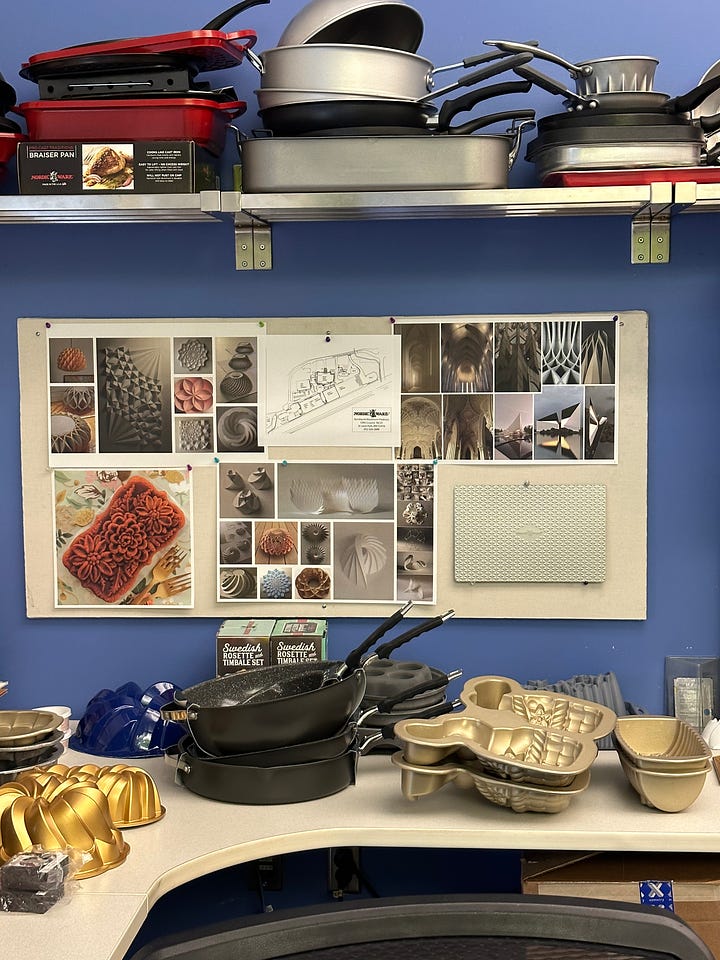

Bringing on a new design can be a risk—setting up a machine to produce a pan is a multi-tens-of-thousand investment, so the team has got to be pretty confident in its ability to sell. And deciding what kind of material to produce the pan in is another question—from the classic cast aluminium pans to the injection moulded plastic pans, it’s a constantly evolving process. Depending on the product, this concept to shipping can take just fifteen weeks.
We enter the factory, and I’m immediately floored by the scale of production—it is big, yes, but everything is human-operated, hand-checked, and produced individually. There is no huge, automated line with interwoven conveyor belts and a robot foreman, just well-taken-care-of, workhorse machines that clamp, spin, and smooth each product with the help of skilled (very much human) engineers nearby. It’s like watching an industrial ballet to contemporary noise music. It’s utterly hypnotic.
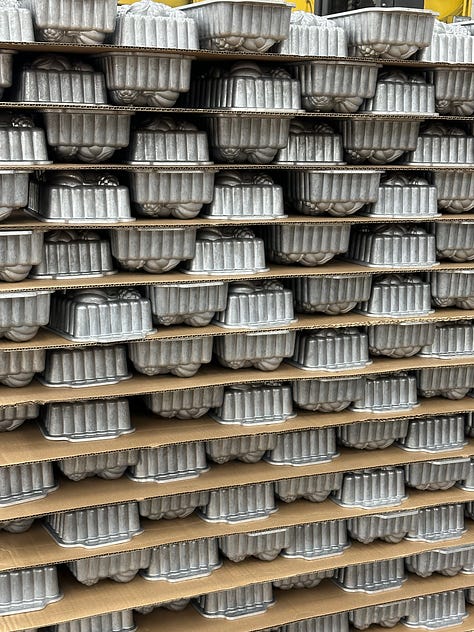
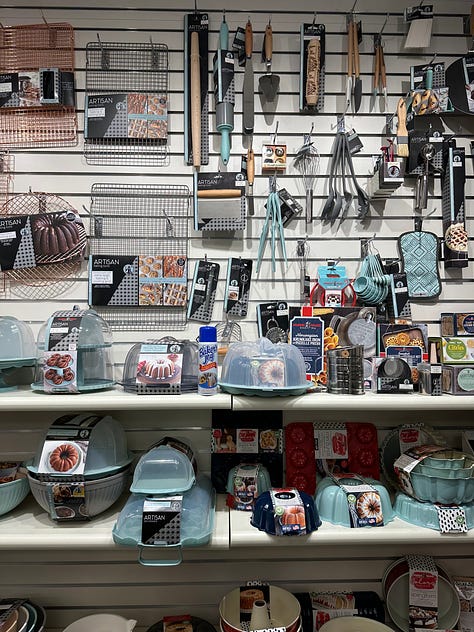
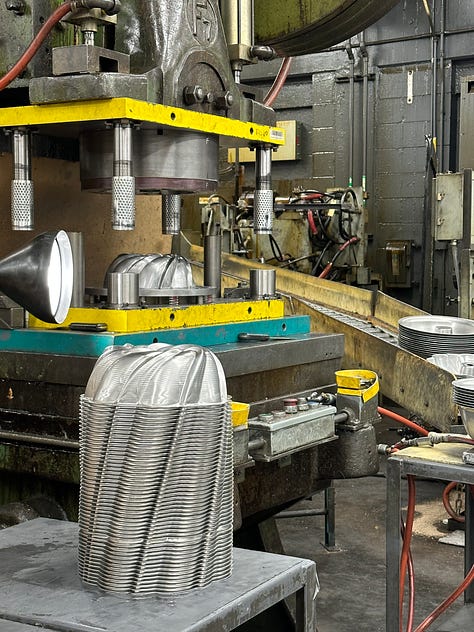
The fulfilment centre is marvellous - ceiling-high shelving units packed with the most beautifully finished and satisfyingly organised cooking and bakeware. Unlike many producers, Nordic Ware handles all the shipping and dispatch of their products both locally and internationally. As we walk through the centre, I ask Jennifer if she has a favourite product (though I feel it’s like asking a parent for their favourite child. “You might be surprised,” she begins. “It's not a Bundt pan!” I am shocked. She picks up a cast aluminium griddle - “I use this every day!”. Just off from the fulfilment centre is a testing kitchen and photo studio, where all of their products are shot for catalogues and online. It’s packed with cookbooks and news articles.
We finish our tour in a room that, though I’m not sure this is its official name, I can only describe as a museum of Nordic Ware. It displays every single product they’ve ever produced, with floor-to-ceiling moulds, spatulas, tins, trays, pots, and pans. Of course, I use this opportunity to ask Jennifer the question that has hounds all prospective and current bundt bakers—how do you get the cake out of a pan cleanly?
She laughs. “I’m a purist, so personally, I just use butter and flour!” but she says that, of course, you can use baking sprays. She warns against cooking sprays that aren’t formulated for baking, which can damage the pan and give you poor results. And, crucially, she says that you should never let your bundt cool completely in the tin. “
The philosophical question: What makes a bundt, a bundt?
Last week, I went into the Nordic Ware shop to pick up a few tins (it was also their bi-annual yellow sticker sale, which means getting incredible deals on tins, trays and all things baking), and as I was checking out, I had a chat with one of the employees. “In your opinion,” I asked, “Can ANY cake be a bundt cake, as long as it's baked in a bundt tin? Or is there a specific cake that a bundt cake needs to be to qualify?” Or, to surmise, “Can you have a cake that is bundt shaped yet not a bundt cake?”
Her response was adamant (and I paraphrase): “Yes, you can have a cake that is bundt-shaped but that is not a bundt cake. Bundt cake should be rich and dense, and, if I was to follow a boxed cake mix, add extra eggs or fat in the form of sour cream.”
Other than that aforementioned episode of Sabrina the Teenage Witch, my experiences with bundt cake have been few and far between. Though I try to research my newsletters as thoroughly as possible, there’s one thing I struggle to conjure - the culture of a certain cake. In the same way that I’d not expect an American baker to have strong opinions on battenburg cake, I’m certainly not a fountain of knowledge on what makes a bundt, a bundt. I decided to ask some of my favourite US and North American-based bakers to see what they think:
Nicole Rucker, author of Dappled and owner-chef of Fat and Flour “No. In my opinion a Bundt is a much stiffer, substantial cake. It has more fat and more flour and it’s hefty, like a pound cake.”
Brian Levy, of Formal Assignment and Kitchen Projects, “I'm of the opinion that any cake made in a bundt pan is a bundt cake. I've even made shokupan in a bundt pan because the pan makes everything so pretty...but I wouldn't call that a bundt cake. Maybe a bundt bread?”
Camilla Wynne, author of Jam Bake and the soon to be published Nature’s Candy: “I think any cake baked in a Bundt tin would technically be a Bundt, but there are a lot of kinds of cake that would just make a really poor Bundt. You need it to be something dense and sliceable that can take the imprint of the design.”
Zoë Francois, author of Zoë Bakes and the soon to be published Zoë Bakes Cookies “IMHO, any cake baked in a Bundt pan is a Bundt Cake! Having said that, many cake recipes can be baked successfully in a Bundt pan, but not all. I'd say a good rule of thumb is if the recipe calls for an ungreased pan, such as Angel Food, Genoise, and Chiffon, it will not work in a Bundt. Those cakes need to cling to the pan to rise. That would be a nightmare in a Bundt, which is intricately designed for maximum beauty once unmolded. Greasing a Bundt pan properly is the magic of success!”
Rachael Coyle of Coyle’s Bakeshop, Seattle “Yes and no. But for me, there is some sanctity to the Bundt design and I wouldn’t throw any old cake in there. But all manner of dense cakes or quick breads: zucchini bread, pumpkin bread, etc., would be entirely appropriate. Chiffon cake, génoise: absolutely not.”
So what’s the answer? I personally am in the camp of that specific type of cake that makes a bundt cake… a bundt cake. I’m not sure why I’m so anti-equal opportunities here, but a carrot cake in a bundt tin is not a bundt cake… but a bundt-shaped carrot cake. Maybe I just spend a lot of time around passionate Midwesterners - pretty much every person from the Midwest and Minnesota specifically that I asked felt strongly that Bundt Cake is a particular type of cake. That being said, I absolutely encourage everyone to use their fluted bundt tins as much as possible - is it time for a hashtag campaign #freethebundttin?
Bundt benefits
In a clip from ‘My Big Fat Greek Wedding’ shared with me by a friend this week, Maria Portokalos receives a bundt cake from her daughter’s future (American) in-laws and says, with great alarm, “There’s a hole in this cake!”.
While we may praise the bundt tin from an aesthetic design perspective, baker Rachael Coyle perfectly describes its impressive, practical side. She explains that the tins are perfect for “cakes that tend to dry out on the edges while waiting for the middle to bake.”
This was a take I’d never actually considered, and it really does track—no wonder these cakes were originally conceived for sharing. As I tested out the recipe this week and turned out several very large cakes, I marveled at just how roomy the tins are and how celebratory they look. While ~1500g of cake mix would bake disastrously in a single regular pan, it takes just 50 minutes in a bundt tin, and it is… Gorgeously even! A baking miracle.
And if you needed any other reason to be convinced, Rachael also shares this pearl: “Bundt pans are also extremely helpful in a commercial setting because they have built-in markings for cutting even slices — which is why we use them for our Olive Oil Bundt cake at the Bakeshop. That, and the fact that they allow us to efficiently bake a rather large cake!”
The KP+ recipe today, while not strictly being a bundt cake and inspired by the tunnel of fudge, certainly uses the bundt shape to its advantage - the hole in the centre allows for a fudgy, mousse-like centre to form whilst still being structurally sound. Click here for the recipe
Raise your hand if you’ve ever been personally victimised by a bundt pan
*raises hand*
Ok, let’s be real here, you can’t write or read an article about bundt cake without mentioning the sticky realities: Those intricate designs make for tricky de-moulding or releasing after baking. When a cake gets stuck to a tin, especially one that you’ve picked specifically for its aesthetic, show-stopping, qualities is gutting. So, what to do?
There are plenty of articles out there dedicated to the art of demoulding a bundt (I particularly enjoy and rate this King Arthur series), and Nordic Ware even has a helpline manned by actual bundt-baking experts who can coach you through traumatic demoulding. Along with the tins, Nordic Ware also has developed a series of ‘extraction’ products to encourage an entrance from a cake with stage fright.
I decided to try out a few of the most popular methods in my adorable and newly acquired bundt pan as follows:
Here’s the results:
Cake spray (I rate this and this one. The Nordic Ware store suggests this one)
Vegetable oil
Butter + flour
Butter
Clarified butter
“Cake Goop”, inspired by this recipe but made with clarified butter instead of vegetable shortening, vegetable oil and flour. Clarified butter, free of milk solids, will also brown less quickly and, as King Arthur Flour suggests, help prevent sticking (hardening milk solids = sticky!)
So I will say this: I don’t think mini pans have the same issue as large pans - the relatively short baking time means that the sugary, buttery crusts you get in the large pans just don’t form in the same way. That being said, I am really not a fan of any butter/flour combination - I think the residue is terrible. Sure, you might not notice it when glazed, but I’D KNOW. That being said, in a larger pan, it’s possible that the flour and fat would brown and be less noticeable. Butter, or clarified butter, alone worked well, but I’m not sure this would fare well on a larger, or more intricate tin.
I was impressed by the goop—the clarified butter added a nice flavour, and for large tins, I can see how this is a good alternative if you can’t get your hands on a high-quality cake release or pan spray.
Speaking of, I am such a cake spray / pan spray stan. This may make me a capitalist shill, but I dig these extraordinarily formulated sprays that have probably had millions of pounds worth of development and testing put into them - I'm yet to have a bad result. So, first place - cake spray, second is goop, and third - begrudgingly - is the fat/flour combination. But please, please, invest in a good spray! I promise you’ll thank me!
What is pound cake anyway?
If, like me, you’ve been living under a metaphorical baking bridge, you might be alarmed to hear that pound cake no longer means equal parts butter, sugar, flour, and eggs. Rather, pound cake is a TYPE of rich dense sponge cake whose proportional weights are no longer equal. Fine, I respect it (but also can we discuss what else has changed - please pin this question for later: What the heck is fudge?) To develop this week's recipe, a “pound” cake that would suit my bundt tin, I looked at a few modern pound cakes. I am lucky enough to have a preview copy of Camilla Wynne’s excellent Nature’s Candy, which boasts a gorgeous coconut-milk laced terrazzo pound cake baked in a bundt pan with throwing-star adjacent sharpness, along with this excellent instructional video for a modern lemon pound by food stylist and baker extraordinaire Holly Cochrane. My final recipe, which you’ll find below, uses a mixture of extra yolks for richness, buttermilk for tang and honey for colour and flavour.
Vanilla Buttermilk Bundt
Makes one very large bundt cake, fitting into a “10-12 cup” mould. I have this one. This recipe scales well and could also be made in regular pans with no stress.
While I take umbrage that a pound cake no longer means a pound cake, I’m happy to share this velvety crumbed recipe with you. Bundt tins are… massive! I think this makes at least 16 slices, though possibly more. While it is delicious on its own, the glaze doing a lot of the talking, I do love this served with a spoon of whipped cream and some fresh blackberries. This cake is so plush and luxurious with an ultra-tight, yet feathery, crumb. This cake has a relatively small amount of raising agents, just 1.5 tsp for 1.5kg of batter, so take time to properly cream together your butter and sugar. It helps if your butter is at room temperature - that’s one of the biggest hurdles to properly incorporated ingredients!
For the glaze, you can either pour it over the cake when warm for a slightly translucent, shimmery effect, or wait until its cooled - you will get a thicker, more opaque glaze.
The Recipe
Ingredients
Cake
325g Soft butter
390g Caster sugar
2 vanilla pods, scraped (or 2-3 tsp good quality extract)
1 tsp Flaky salt, like maldon
40g Honey
220g Eggs, about four large
30g Egg yolks, about two
160ml buttermilk
360g Plain flour
6g Baking powder, 1.5 tsp
Glaze
200g Caster sugar*
50g Buttermilk
20g Honey
1 tsp Vanilla extract, or ½ 1 pod scraped
½ tsp Citric Acid
Pinch salt
*You can use icing sugar, but i don’t like the taste of it
To serve: Whipped cream, berries
Method
Preheat the oven to 160°C fan. If you are using home made ‘cake goop’, brush or rub this all over the tin and place the tin in the fridge until you are ready to use. If you are using cake spray, do not spray until just before filling, otherwise it will fall and settle in the crevices.
For the batter, cream together the soft butter, scraped vanilla seeds, salt and caster sugar until light and fluffy, which should take about 3-5 minutes with an electric mixer, or less in a stand mixer, about 2-3 minutes. Do not overcream to the point that the mixture is bright white and greasy looking - this is a rich cake, and too much air will create problems later - the cake will inflate then fall, resulting in gluey pockets. Scrape down the side of the bowl to make sure all the ingredients are incorporated.
Gradually add the eggs and egg yolks, one at a time, beating well after each addition.
In a separate bowl, sift together the plain flour and baking powder. Proper sifting is important for an even crumb here - large holes in your cake are usually due to improper distribution of raising agents creating unsightly caverns.
Mix honey with buttermilk and set aside.
Alternate adding the dry ingredients and buttermilk/honey to the creamed butter/egg mixture, in about three goes, folding gently with a spatula until just combined.
Pour the batter into the prepared cake tin, smoothing the top with a spatula. Tap on the counter several times to settle the batter into intricate patterns of the pan.
Bake in the preheated oven for 50-60 minutes, or until a skewer inserted into the center comes out clean. Tent with foil after 40 minutes if it darkens too much.
While the cake is baking, prepare the glaze. Whizz the caster sugar, salt and citric acid to a fine powder in a food processor (I use a nutribullet). If you are using icing sugar, you don’t need to do this step. Add the rest of the ingredients and whizz until smooth (or whisk by hand if using icing sugar). Taste and check for seasoning, adjusting as needed.
Once the cake is baked, remove it from the oven and allow it to cool in the tin for 10 minutes. Turn it over onto a baking rack and see if the cake slides out. It should! If not, give it a wiggle and try again.
To glaze the cake, set it over a tray to capture any extra glaze. To glaze when warm, pour or brush it evenly over the cake. To glaze when cool, pouring works best. Let cool completely. Slice and enjoy with whipped cream and berries. Blackberries are gorgeous here.




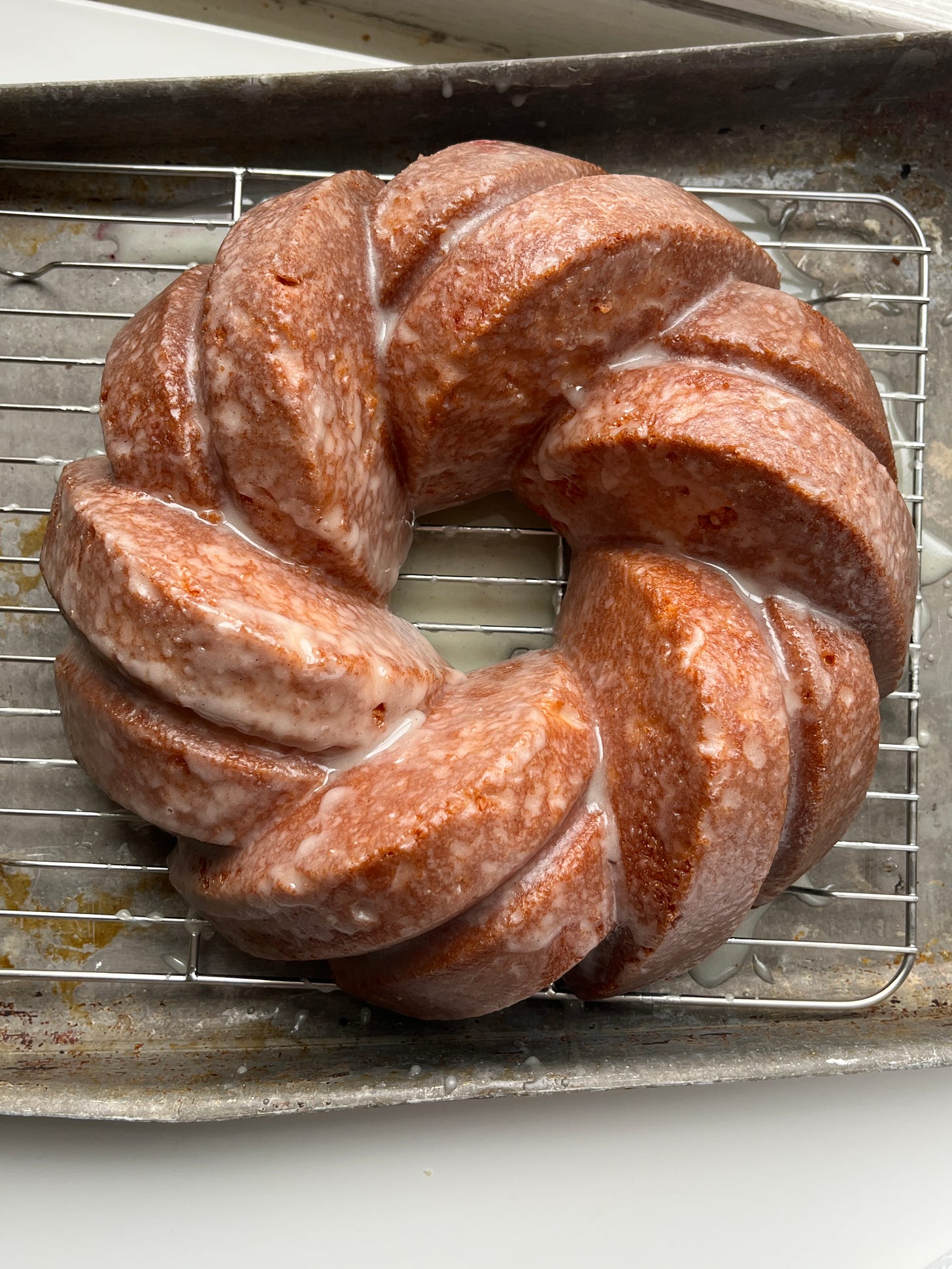
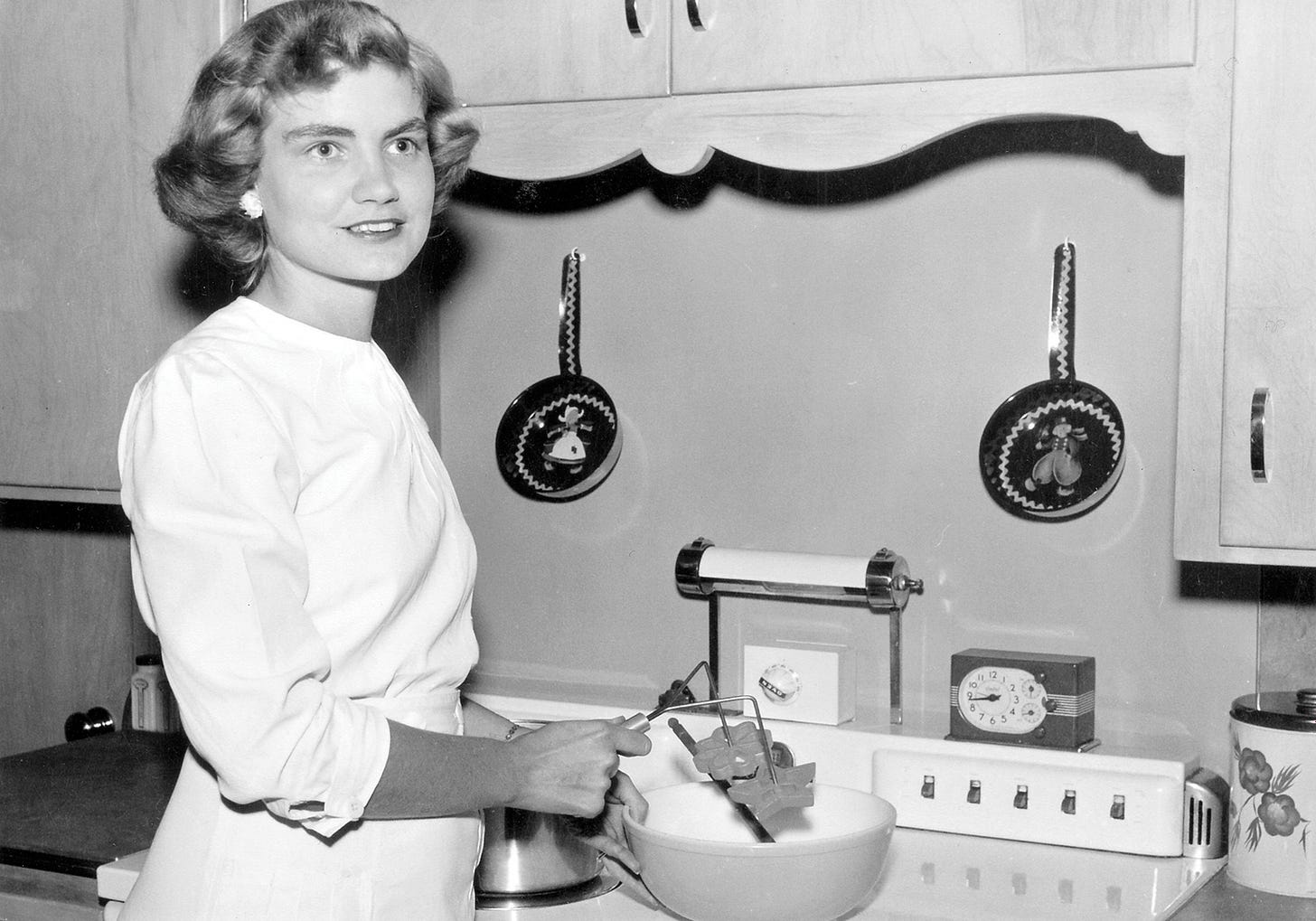
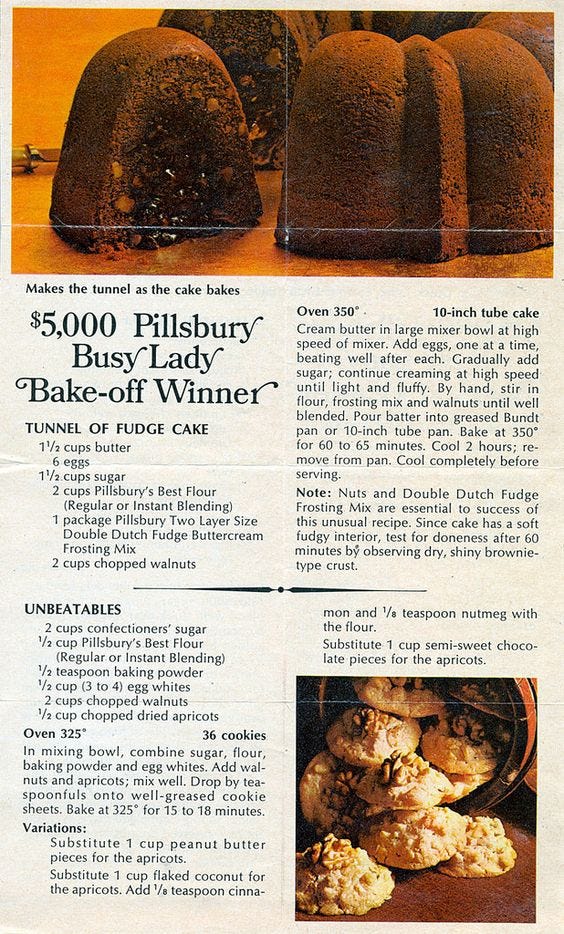
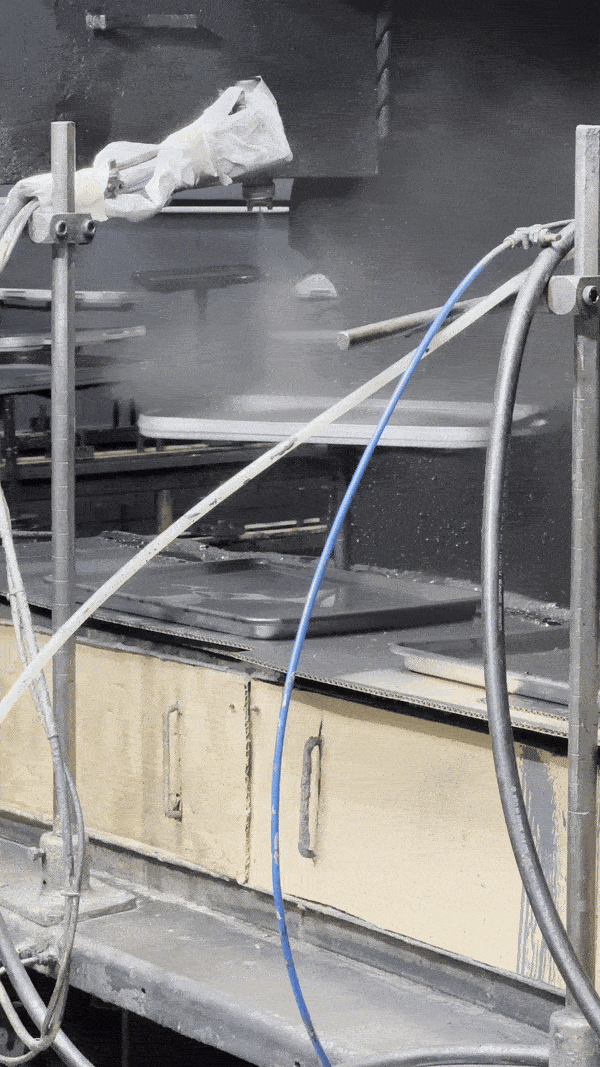

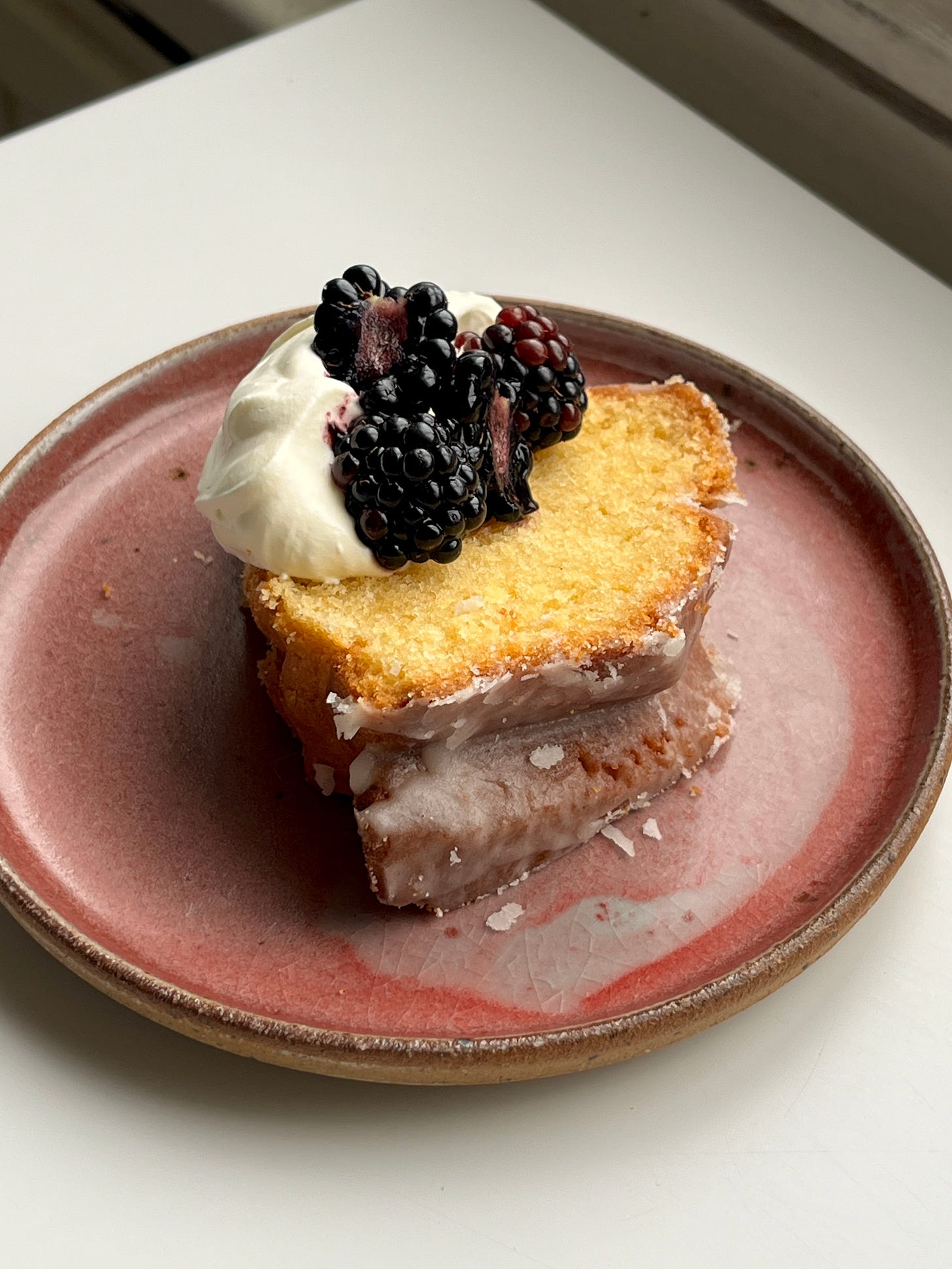
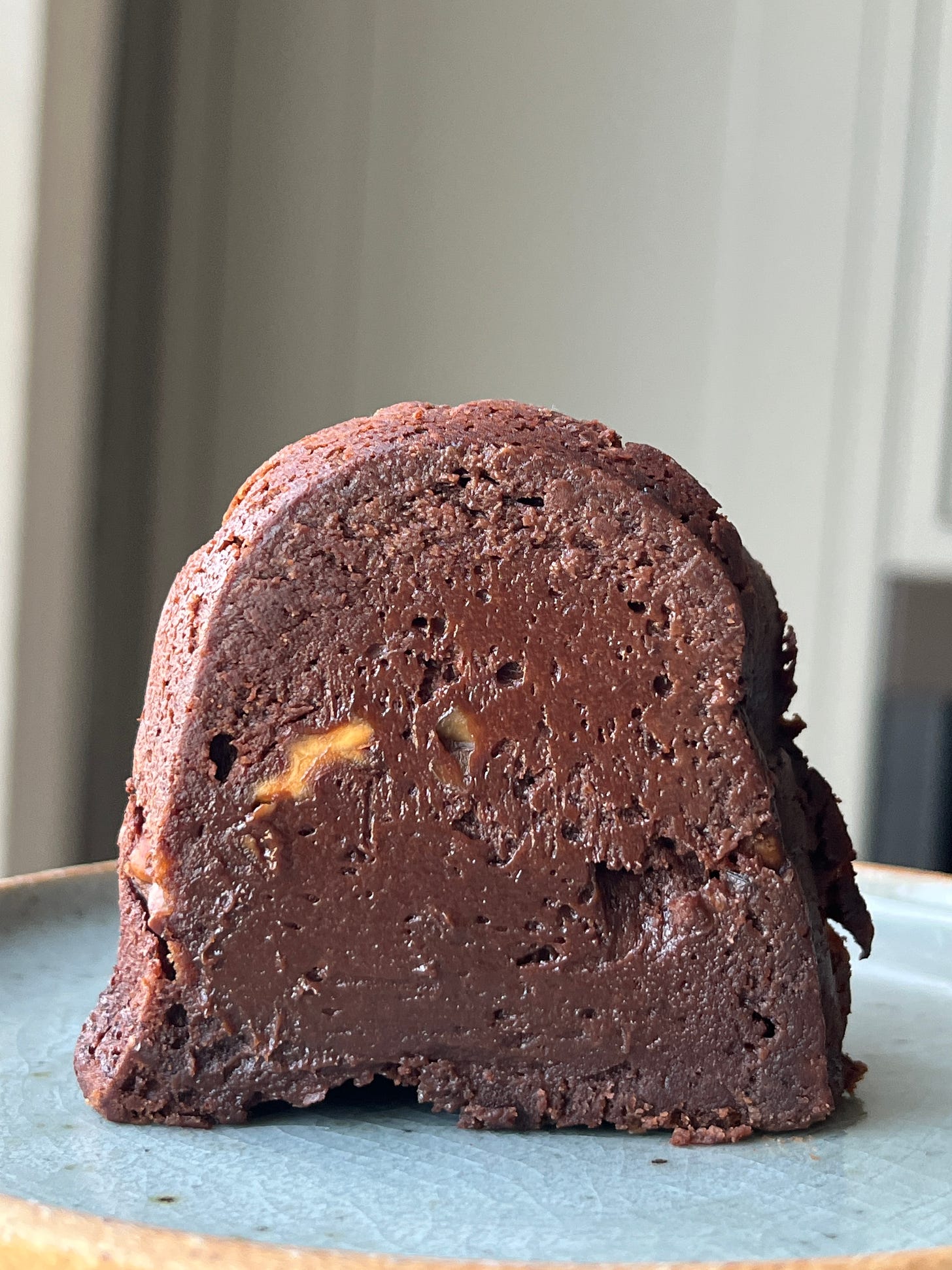
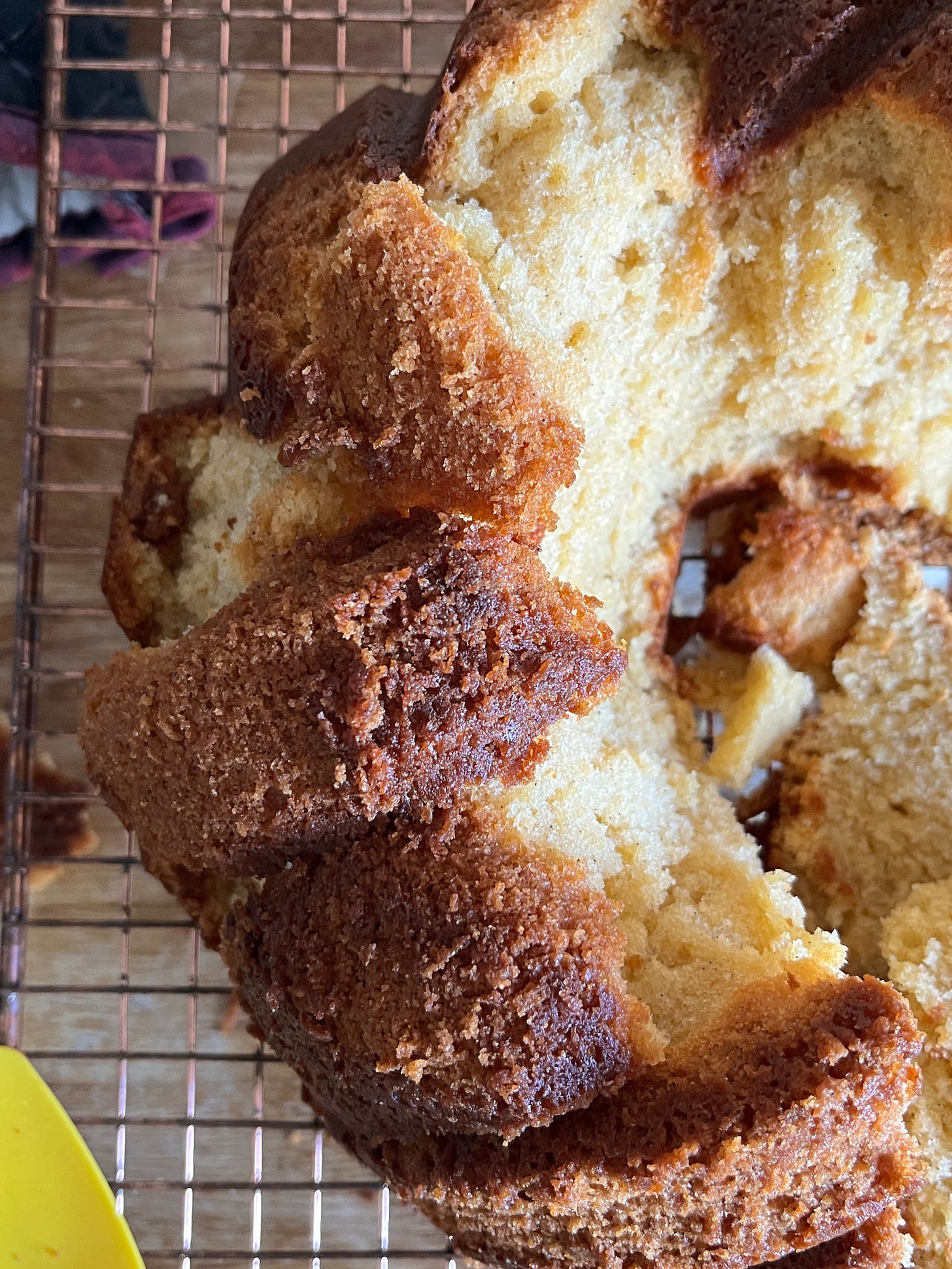
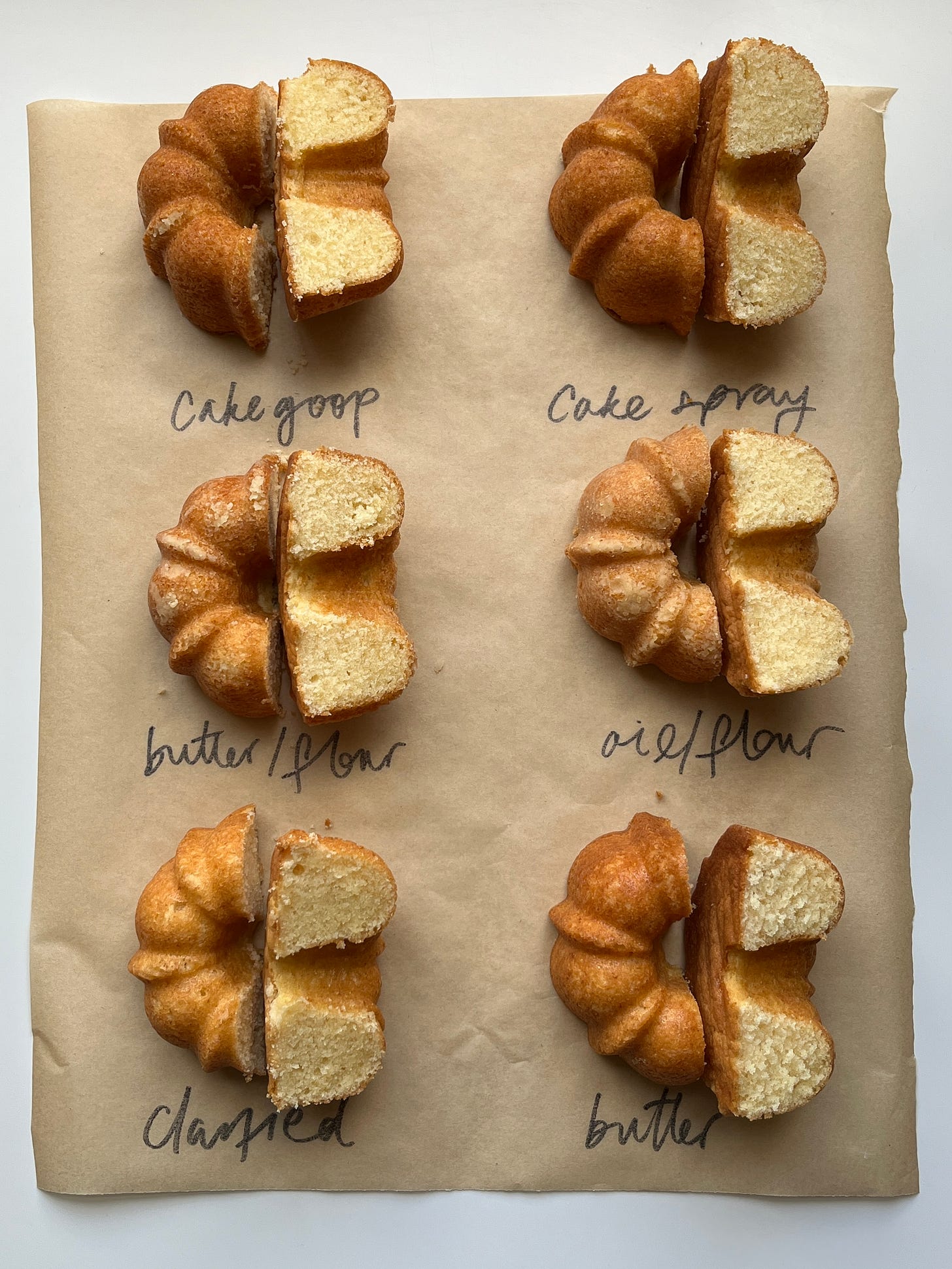
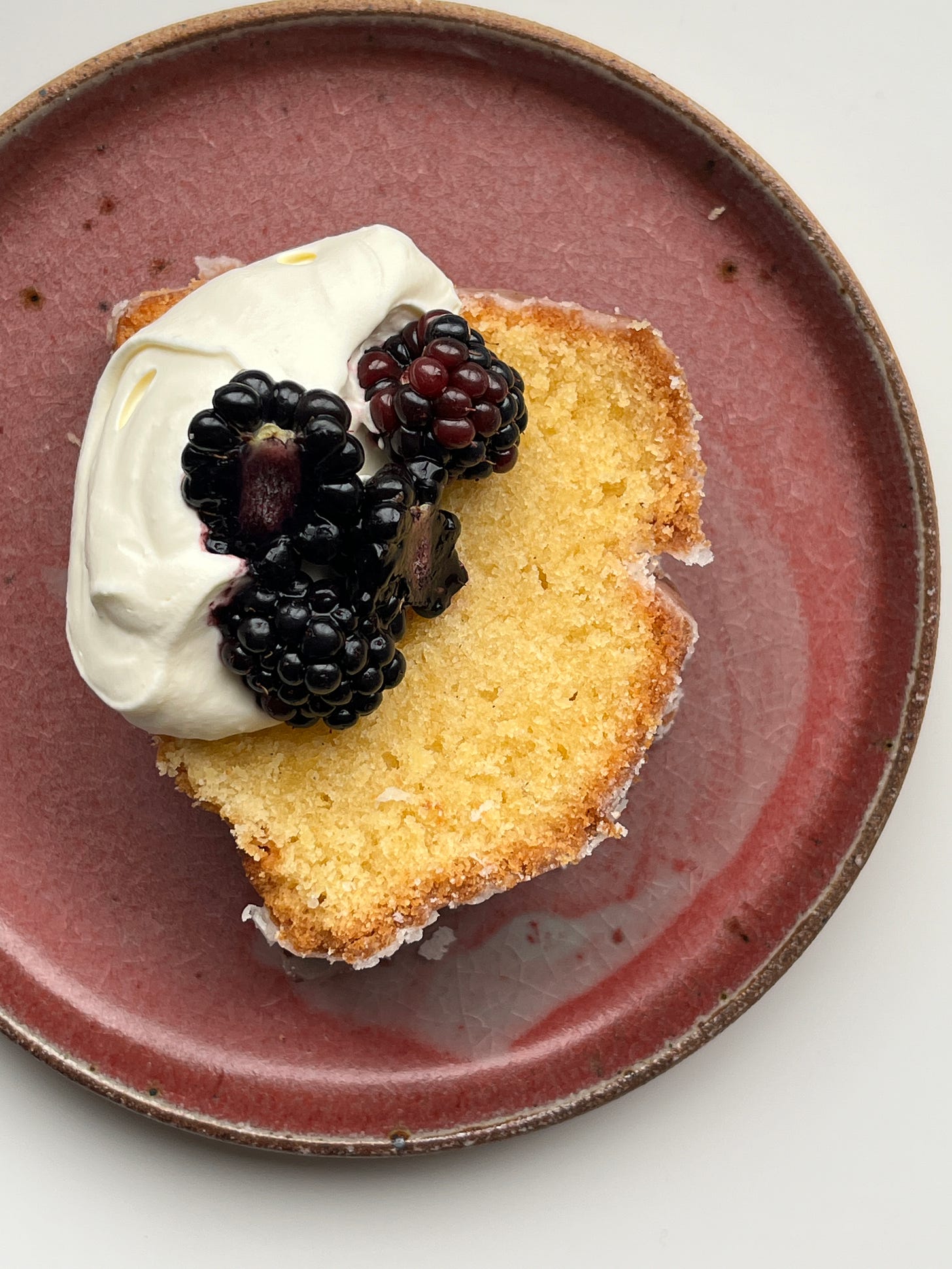

FOR ANYONE COMING FROM THE EMAIL RECIPE: the buttermilk was missing from the sponge - forgive me! It's now in the ingredients list. 160g!
I too do not like the taste of (bought) icing sugar. It's so strange. But in case you didn't know: it's actually quite easy to make icing sugar yourself by pulsing caster sugar in a blender – I have a Vitamix. Just be sure to wait a moment before opening the jar after blending (a cloud of icing sugar will envelop you). It's also fun to throw in extra ingredients like vanilla.